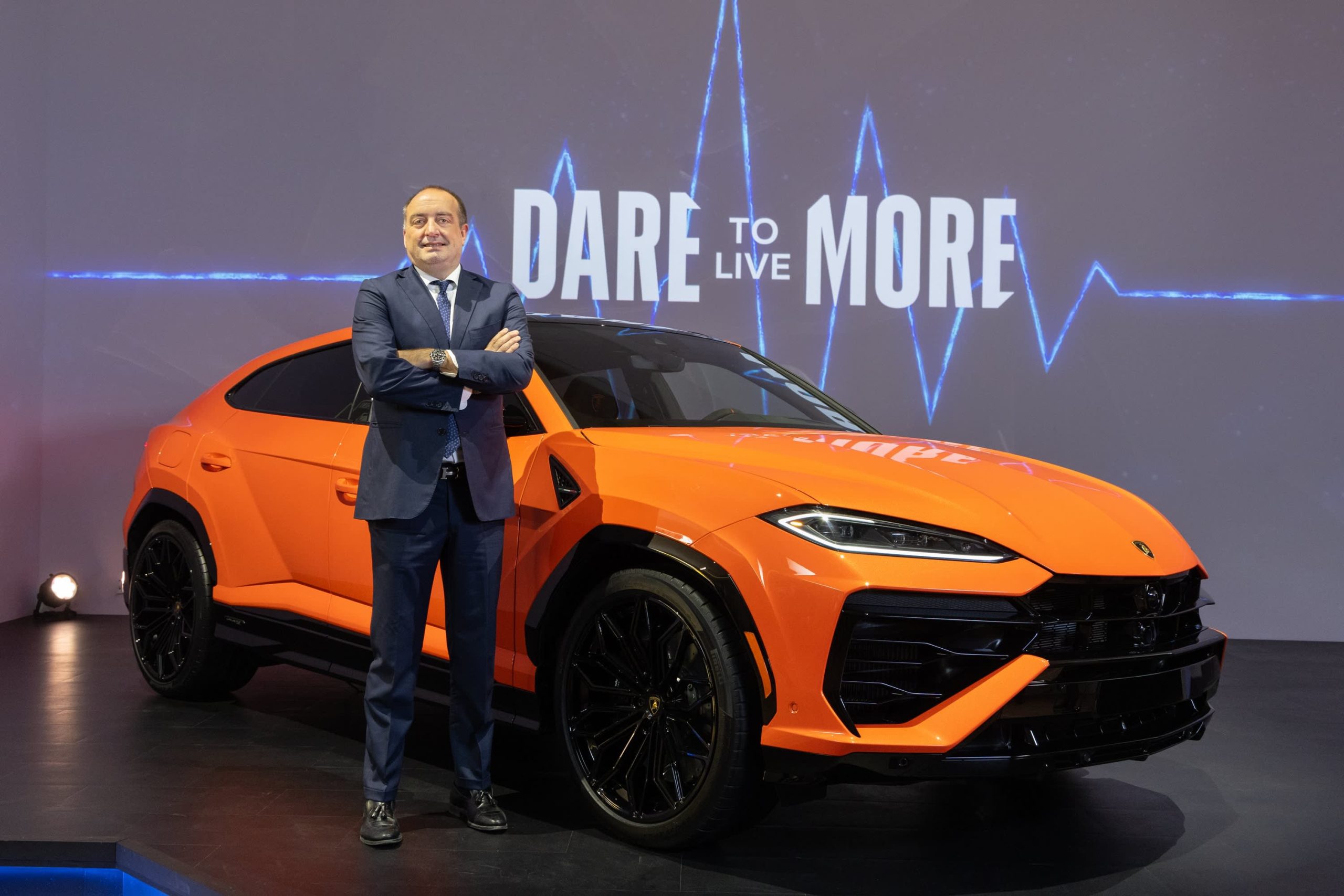Online Speech Is Now An Existential Question For Tech
Content moderation rules used to be a question of taste. Now, they can determine a service’s prospects for survival.
Every public communication platform you can name—from Facebook, Twitter and YouTube to Parler, Pinterest and Discord—is wrestling with the same two questions:
How do we make sure we’re not facilitating misinformation, violence, fraud or hate speech?
At the same time, how do we ensure we’re not censoring users?
The more they moderate content, the more criticism they experience from those who think they’re over-moderating. At the same time, any statement on a fresh round of moderation provokes some to point out objectionable content that remains. Like any question of editorial or legal judgment, the results are guaranteed to displease someone, somewhere—including Congress, which this week called the chief executives of Facebook, Google and Twitter to a hearing on March 25 to discuss misinformation on their platforms.
For many services, this has gone beyond a matter of user experience, or growth rates, or even ad revenue. It’s become an existential crisis. While dialling up moderation won’t solve all of a platform’s problems, a look at the current winners and losers suggests that not moderating enough is a recipe for extinction.
Facebook is currently wrestling with whether it will continue its ban of former president Donald Trump. Pew Research says 78% of Republicans opposed the ban, which has contributed to the view of many in Congress that Facebook’s censorship of conservative speech justifies breaking up the company—something a decade of privacy scandals couldn’t do.
Parler, a haven for right-wing users who feel alienated by mainstream social media, was taken down by its cloud service provider, Amazon Web Services, after some of its users live-streamed the riot at the U.S. Capitol on Jan. 6. Amazon cited Parler’s apparent inability to police content that incites violence. While Parler is back online with a new service provider, it’s unclear if it has the infrastructure to serve a large audience.
During the weeks Parler was offline, the company implemented algorithmic filtering for a few content types, including threats and incitement, says a company spokesman. The company also has an automatic filter for “trolling” that detects such content, but it’s up to users whether to turn it on or not. In addition, those who choose to troll on Parler are not penalized in Parler’s algorithms for doing so, “in the spirit of First Amendment,” says the company’s guidelines for enforcement of its content moderation policies. Parler recently fired its CEO, who said he experienced resistance to his vision for the service, including how it should be moderated.
Now, just about every site that hosts user-generated content is carefully weighing the costs and benefits of updating their content moderation systems, using a mix of human professionals, algorithms and users. Some are even building rules into their services to pre-empt the need for increasingly costly moderation.
The saga of gaming-focused messaging app Discord is instructive: In 2018, the service, which is aimed at children and young adults, was one of those used to plan the Charlottesville riots. A year later, the site was still taking what appeared to be a deliberately laissez-faire approach to content moderation.
By this January, however, spurred by reports of hate speech and lurking child predators, Discord had done a complete 180. It now has a team of machine-learning engineers building systems to scan the service for unacceptable uses, and has assigned 15% of its overall staff to trust and safety issues.
This newfound attention to content moderation helped keep Discord away from the controversy surrounding the Capitol riot, and caused it to briefly ban a chat group associated with WallStreetBets during the GameStop stock runup. Discord’s valuation doubled to $7 billion over roughly the same period, a validation that investors have confidence in its moderation strategy.
The prevalence problem
The challenge successful platforms face is moderating content “at scale,” across millions or billions of pieces of shared content.
Before any action can be taken, services must decide what should be taken down, an often slow and deliberative process.
Imagine, for example, that a grass-roots movement gains momentum in a country, and begins espousing extreme and potentially dangerous ideas on social media. While some language might be caught by algorithms immediately, a decision about whether discussion of a particular movement, like QAnon, should be banned completely, could take months on a service such as YouTube, says a Google spokesman.
One reason it can take so long is the global nature of these platforms. Google’s policy team might consult with experts in order to consider regional sensitivities before making a decision. After a policy decision is made, the platform has to train AI and write rules for human moderators to enforce it—then make sure both are carrying out the policies as intended, he adds.
While AI systems can be trained to catch individual pieces of problematic content, they’re often blind to the broader meaning of a body of posts, says Tracy Chou, founder of content-moderation startup Block Party and former tech lead at Pinterest.
Take the case of the “Stop the Steal” protest, which led to the deadly attack on the U.S. Capitol. Individual messages used to plan the attack, like “Let’s meet at location X,” would probably look innocent to a machine-learning system, says Ms Chou, but “the context is what’s key.” Facebook banned all content mentioning “Stop the Steal” after the riot.
Even after Facebook has identified a particular type of content as harmful, why does it seem constitutionally unable to keep it off its platform?
It’s the “prevalence problem.” On a truly gigantic service, even if only a tiny fraction of content is problematic, it can still reach millions of people. Facebook has started publishing a quarterly report on its community standards enforcement. During the last quarter of 2020, Facebook says users saw seven or eight pieces of hate speech out of every 10,000 views of content. That’s down from 10 or 11 pieces the previous quarter. The company said it will begin allowing third-party audits of these claims this year.
While Facebook has been leaning heavily on AI to moderate content, especially during the pandemic, it currently has about 15,000 human moderators. And since every new moderator comes with a fixed additional cost, the company has been seeking more efficient ways for its AI and existing humans to work together.
In the past, human moderators reviewed content flagged by machine learning algorithms in more or less chronological order. Content is now sorted by a number of factors, including how quickly it’s spreading on the site, says a Facebook spokesman. If the goal is to reduce the number of times people see harmful content, the most viral stuff should be top priority.
A content moderator in every pot
Companies that aren’t Facebook or Google often lack the resources to field their own teams of moderators and machine-learning engineers. They have to consider what’s within their budget, which includes outsourcing the technical parts of content moderation to companies such as San Francisco-based startup Spectrum Labs.
Through its cloud-based service, Spectrum Labs shares insights it gathers from any one of its clients with all of them—which include Pinterest and Riot Games, maker of League of Legends—in order to filter everything from bad words and human trafficking to hate speech and harassment, says CEO Justin Davis.
Mr Davis says Spectrum Labs doesn’t say what clients should and shouldn’t ban. Beyond illegal content, every company decides for itself what it deems acceptable, he adds.
Pinterest, for example, has a mission rooted in “inspiration,” and this helps it take a clear stance in prohibiting harmful or objectionable content that violates its policies and doesn’t fit its mission, says a company spokeswoman.
Services are also attempting to reduce the content-moderation load by reducing the incentives or opportunity for bad behaviour. Pinterest, for example, has from its earliest days minimized the size and significance of comments, says Ms Chou, the former Pinterest engineer, in part by putting them in a smaller typeface and making them harder to find. This made comments less appealing to trolls and spammers, she adds.
The dating app Bumble only allows women to reach out to men. Flipping the script of a typical dating app has arguably made Bumble more welcoming for women, says Mr Davis, of Spectrum Labs. Bumble has other features designed to pre-emptively reduce or eliminate harassment, says Chief Product Officer Miles Norris, including a “super block” feature that builds a comprehensive digital dossier on banned users. This means that if, for example, banned users attempt to create a new account with a fresh email address, they can be detected and blocked based on other identifying features.
The ‘supreme court of content’
Facebook CEO Mark Zuckerberg recently described Facebook as something between a newspaper and a telecommunications company. For it to continue being a global town square, it doesn’t have the luxury of narrowly defining the kinds of content and interactions it will allow. For its toughest content moderation decisions, it has created a higher power—a financially independent “oversight board” that includes a retired U.S. federal judge, a former prime minister of Denmark and a Nobel Peace Prize laureate.
In its first decision, the board overturned four of the five bans Facebook brought before it.
Facebook has said that it intends the decisions made by its “supreme court of content” to become part of how it makes everyday decisions about what to allow on the site. That is, even though the board will make only a handful of decisions a year, these rulings will also apply when the same content is shared in a similar way. Even with that mechanism in place, it’s hard to imagine the board can get to more than a tiny fraction of the types of situations content moderators and their AI assistants must decide every day.
But the oversight board might accomplish the goal of shifting the blame for Facebook’s most momentous moderation decisions. For example, if the board rules to reinstate the account of former President Trump, Facebook could deflect criticism of the decision by noting it was made independent of its own company politics.
Meanwhile, Parler is back up, but it’s still banned from the Apple and Google app stores. Without those essential routes to users—and without web services as reliable as its former provider, Amazon—it seems unlikely that Parler can grow anywhere close to the rate it otherwise might have. It’s not clear yet whether Parler’s new content filtering algorithms will satisfy Google and Apple. How the company balances its enhanced moderation with its stated mission of being a “viewpoint neutral” service will determine whether it grows to be a viable alternative to Twitter and Facebook or remains a shadow of what it could be with such moderation.
 Copyright 2020, Dow Jones & Company, Inc. All Rights Reserved Worldwide. LEARN MORE
Copyright 2020, Dow Jones & Company, Inc. All Rights Reserved Worldwide. LEARN MORE
This stylish family home combines a classic palette and finishes with a flexible floorplan
Just 55 minutes from Sydney, make this your creative getaway located in the majestic Hawkesbury region.
The marketplace has spoken and, at least for now, it’s showing preference for hybrids and plug-in hybrids (PHEVs) over battery electrics. That makes Toyota’s foot dragging on EVs (and full speed ahead on hybrids) look fairly wise, though the timeline along a bumpy road still gets us to full electrification by 2035.
Italian supercar producer Lamborghini, in business since 1963, is also proceeding, incrementally, toward battery power. In an interview, Federico Foschini , Lamborghini’s chief global marketing and sales officer, talked about the new Urus SE plug-in hybrid the company showed at its lounge in New York on Monday.

Lamborghini
The Urus SE SUV will sell for US$258,000 in the U.S. (the company’s biggest market) when it goes on sale internationally in the first quarter of 2025, Foschini says.
“We’re using the contribution from the electric motor and battery to not only lower emissions but also to boost performance,” he says. “Next year, all three of our models [the others are the Revuelto, a PHEV from launch, and the continuation of the Huracán] will be available as PHEVs.”
The Euro-spec Urus SE will have a stated 37 miles of electric-only range, thanks to a 192-horsepower electric motor and a 25.9-kilowatt-hour battery, but that distance will probably be less in stricter U.S. federal testing. In electric mode, the SE can reach 81 miles per hour. With the 4-litre 620-horsepower twin-turbo V8 engine engaged, the picture is quite different. With 789 horsepower and 701 pound-feet of torque on tap, the SE—as big as it is—can reach 62 mph in 3.4 seconds and attain 193 mph. It’s marginally faster than the Urus S, but also slightly under the cutting-edge Urus Performante model. Lamborghini says the SE reduces emissions by 80% compared to a standard Urus.
Lamborghini’s Urus plans are a little complicated. The company’s order books are full through 2025, but after that it plans to ditch the S and Performante models and produce only the SE. That’s only for a year, however, because the all-electric Urus should arrive by 2029.

Lamborghini
Thanks to the electric motor, the Urus SE offers all-wheel drive. The motor is situated inside the eight-speed automatic transmission, and it acts as a booster for the V8 but it can also drive the wheels on its own. The electric torque-vectoring system distributes power to the wheels that need it for improved cornering. The Urus SE has six driving modes, with variations that give a total of 11 performance options. There are carbon ceramic brakes front and rear.
To distinguish it, the Urus SE gets a new “floating” hood design and a new grille, headlights with matrix LED technology and a new lighting signature, and a redesigned bumper. There are more than 100 bodywork styling options, and 47 interior color combinations, with four embroidery types. The rear liftgate has also been restyled, with lights that connect the tail light clusters. The rear diffuser was redesigned to give 35% more downforce (compared to the Urus S) and keep the car on the road.
The Urus represents about 60% of U.S. Lamborghini sales, Foschini says, and in the early years 80% of buyers were new to the brand. Now it’s down to 70%because, as Foschini says, some happy Urus owners have upgraded to the Performante model. Lamborghini sold 3,000 cars last year in the U.S., where it has 44 dealers. Global sales were 10,112, the first time the marque went into five figures.
The average Urus buyer is 45 years old, though it’s 10 years younger in China and 10 years older in Japan. Only 10% are women, though that percentage is increasing.
“The customer base is widening, thanks to the broad appeal of the Urus—it’s a very usable car,” Foschini says. “The new buyers are successful in business, appreciate the technology, the performance, the unconventional design, and the fun-to-drive nature of the Urus.”
Maserati has two SUVs in its lineup, the Levante and the smaller Grecale. But Foschini says Lamborghini has no such plans. “A smaller SUV is not consistent with the positioning of our brand,” he says. “It’s not what we need in our portfolio now.”
It’s unclear exactly when Lamborghini will become an all-battery-electric brand. Foschini says that the Italian automaker is working with Volkswagen Group partner Porsche on e-fuel, synthetic and renewably made gasoline that could presumably extend the brand’s internal-combustion identity. But now, e-fuel is very expensive to make as it relies on wind power and captured carbon dioxide.
During Monterey Car Week in 2023, Lamborghini showed the Lanzador , a 2+2 electric concept car with high ground clearance that is headed for production. “This is the right electric vehicle for us,” Foschini says. “And the production version will look better than the concept.” The Lanzador, Lamborghini’s fourth model, should arrive in 2028.
Consumers are going to gravitate toward applications powered by the buzzy new technology, analyst Michael Wolf predicts
Just 55 minutes from Sydney, make this your creative getaway located in the majestic Hawkesbury region.























